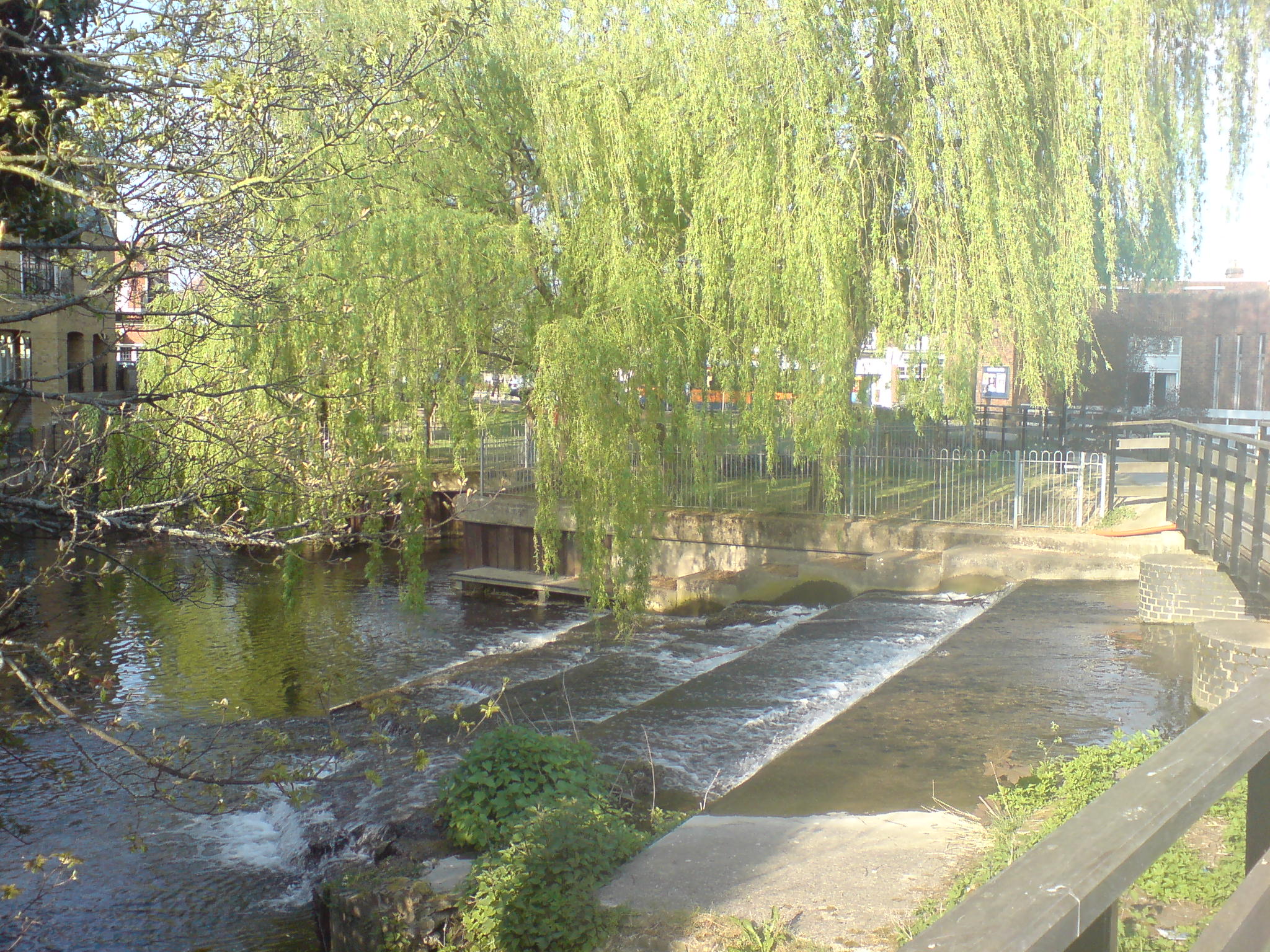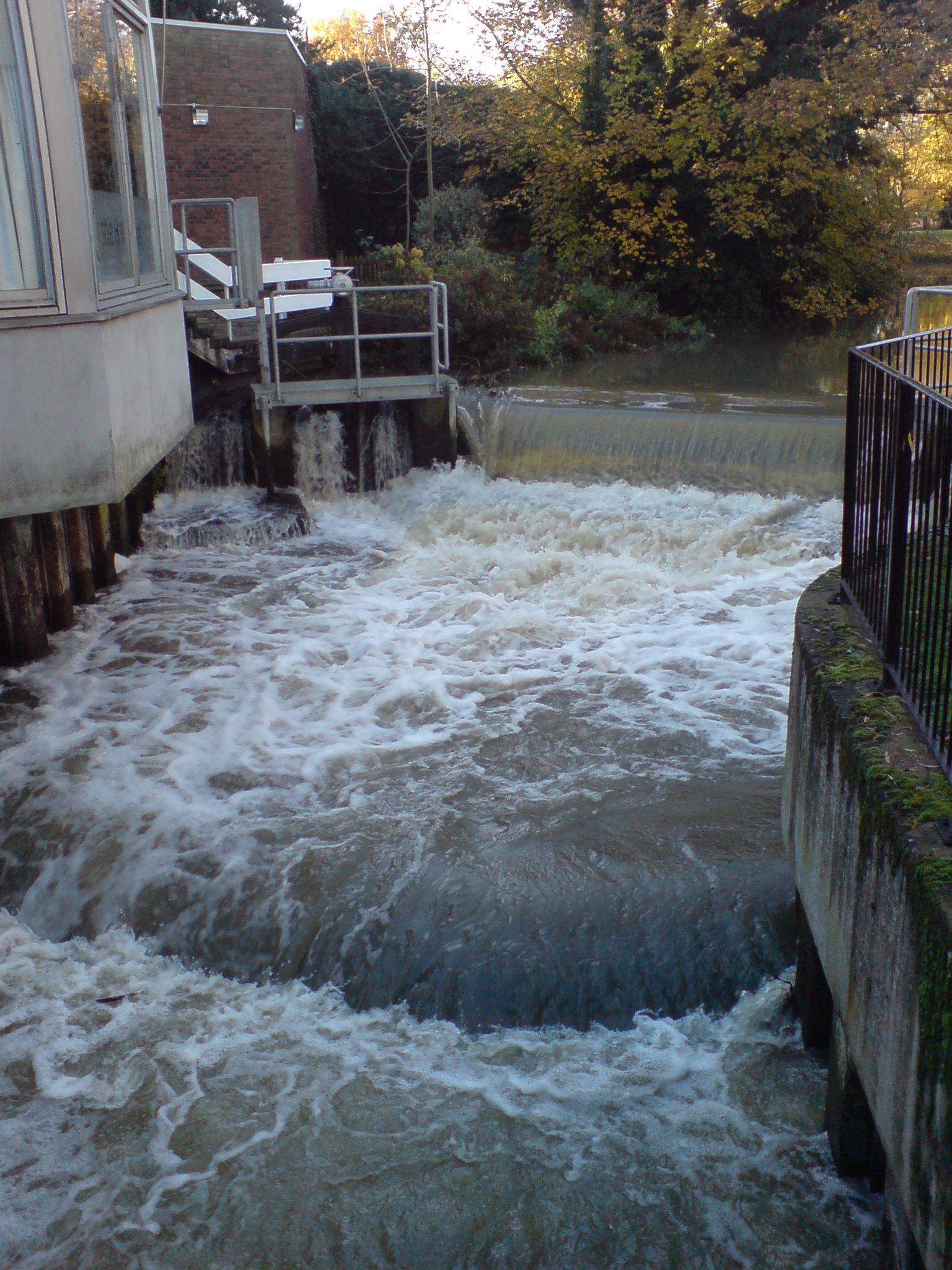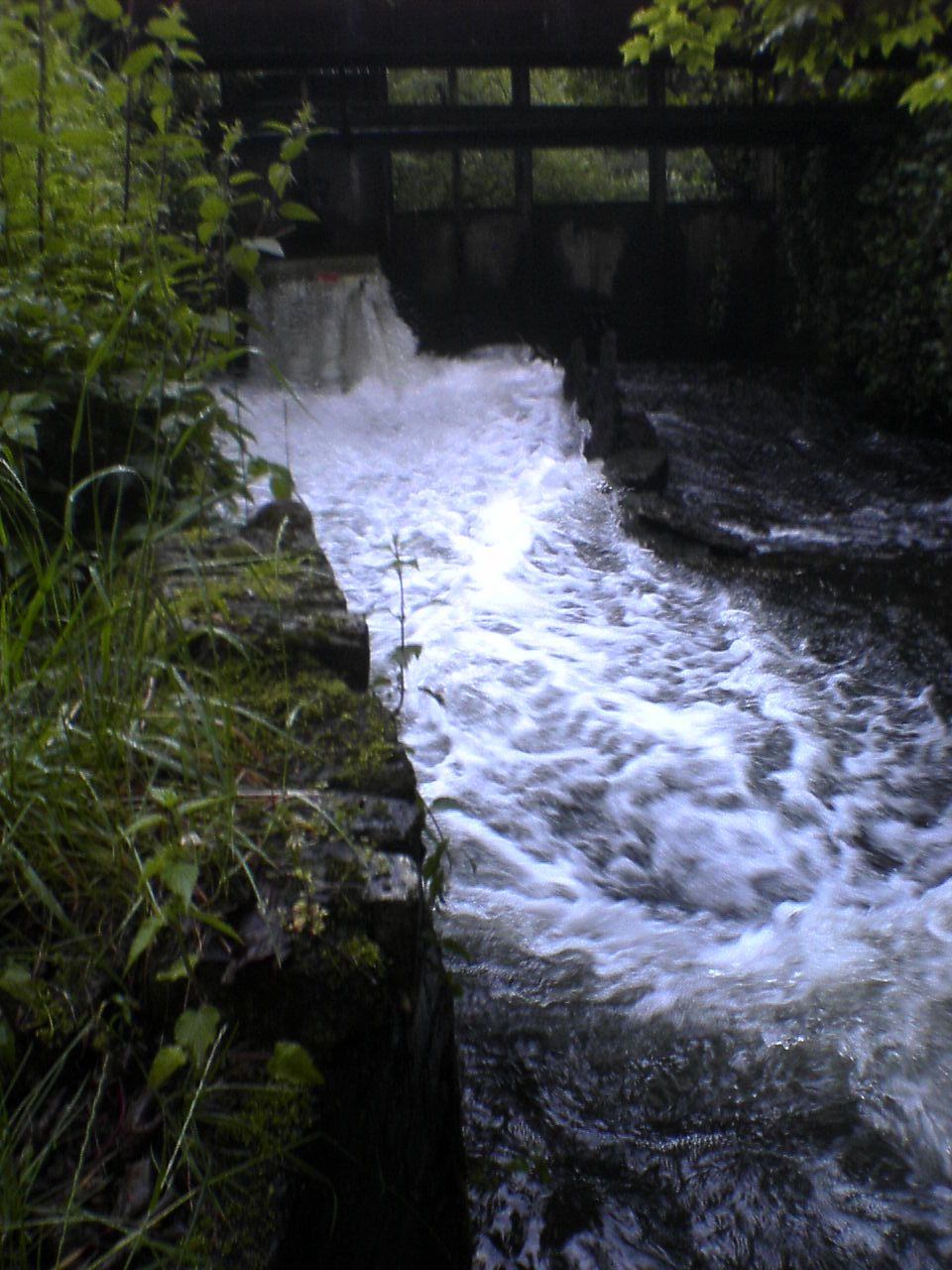Hertford Castle Weir on:
[Wikipedia]
[Google]
[Amazon]


 Hertford Castle Weir is a
Hertford Castle Weir is a


 Hertford Castle Weir is a
Hertford Castle Weir is a weir
A weir or low head dam is a barrier across the width of a river that alters the flow characteristics of water and usually results in a change in the height of the river level. Weirs are also used to control the flow of water for outlets of l ...
located in Hertford near to Hertford Castle
Hertford Castle was built in Norman times by the River Lea in Hertford, the county town of Hertfordshire, England. Most of the internal buildings of the castle have been demolished. The main surviving section is the Tudor gatehouse, which is a Gr ...
and next to Hertford Theatre.
Its function is to connect the upper River Lea to the canalised section that runs through Hertfordshire, Essex
Essex () is a county in the East of England. One of the home counties, it borders Suffolk and Cambridgeshire to the north, the North Sea to the east, Hertfordshire to the west, Kent across the estuary of the River Thames to the south, and Grea ...
and London
London is the capital and List of urban areas in the United Kingdom, largest city of England and the United Kingdom, with a population of just under 9 million. It stands on the River Thames in south-east England at the head of a estuary dow ...
, to the River Thames
The River Thames ( ), known alternatively in parts as the River Isis, is a river that flows through southern England including London. At , it is the longest river entirely in England and the second-longest in the United Kingdom, after the R ...
. The section of the river above Castle Weir is not deep enough to support barge
Barge nowadays generally refers to a flat-bottomed inland waterway vessel which does not have its own means of mechanical propulsion. The first modern barges were pulled by tugs, but nowadays most are pushed by pusher boats, or other vessels ...
s or narrow boats, but is navigable by row boat
Rowing is the act of propelling a human-powered watercraft using the sweeping motions of oars to displace water and generate reactional propulsion. Rowing is functionally similar to paddling, but rowing requires oars to be mechanically atta ...
s, canoes
A canoe is a lightweight narrow water vessel, typically pointed at both ends and open on top, propelled by one or more seated or kneeling paddlers facing the direction of travel and using a single-bladed paddle.
In British English, the ter ...
and kayaks
A kayak is a small, narrow watercraft which is typically propelled by means of a double-bladed paddle. The word kayak originates from the Greenlandic word '' qajaq'' ().
The traditional kayak has a covered deck and one or more cockpits, each s ...
.
The weir marks the start of the River Lee Navigation. It is overlooked by a function room at the Hertford Theatre (previously called Castle Hall).
Access
Just off Mill Bridge ( B158 road) in the centre of Hertford town, beside the Castle Hall. A small bridge runs from Mill Bridge over the secondary drop to a car park. A step upstream from this bridge allows access to the top of the weir.Angling
Angling
Angling is a fishing technique that uses a fish hook or "angle" (from Old English ''angol'') attached to a fishing line to tether individual fish in the mouth. The fishing line is usually manipulated via a fishing rod, although rodless techni ...
in the weir pool is possible, but tricky due to pontoon access at the weir pool. Anglers often stand on the stepped weir drops, but this is discouraged due to the damage that is sustained to the weir itself.
Weir setup
Castle Weir has 3 sections: * A vertical 70 cm drop onto a second 30 cm concrete block, situated in a stilling pool. The stilling pool overflows into a tunnel which leads under the road. The 70 cm drop has two electric gates which move vertically in high flows. * 5 padlocked sluice gates. Rarely used, as these are manually controlled byBritish Waterways
British Waterways, often shortened to BW, was a statutory corporation wholly owned by the government of the United Kingdom. It served as the navigation authority for the majority of canals and a number of rivers and docks in England, Scotlan ...
.
* Stepped drop for high flows.
Whitewater use
Kayakers and canoeists regularly use the weir for practicingwhitewater
Whitewater forms in a rapid context, in particular, when a river's gradient changes enough to generate so much turbulence that air is trapped within the water. This forms an unstable current that froths, making the water appear opaque and ...
skills and playboating.
* Main drop - Can be run straight or sideways.
* Main drop sluice - Creates a jet which can tail squirts can be performed on. At high flows it makes the weir harder to paddle in, and can cause pinning in the stopper, river right.
* Stilling pool drop - Side-surfing is possible at most flows. Cartwheeling is possible when the pool level raises. Normally about 70 cm deep.
* Side sluice - A wave and stopper forms here, depending on weir pool levels and amount of water coming through the sluice. This water has been constricted by kayakers using concrete blocks to form different features. It can vary from 30–50 cm high wave which can be carved in front-surf, to a shallow retentive pour-over, which is side-surf able.
* Stepped drop - Can be run when river is in spate, very likely to do damage to the weir or your boat when the water flowing over it is less than 3 cm in depth. A small wave and stopper forms at the bottom which can be played on, however, it is very shallow.
See also
* Weirs on the River Lea * River Lea * River Lee Navigation {{authority control Weirs on the River Lea Weirs in Hertfordshire Buildings and structures in Hertford